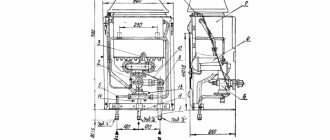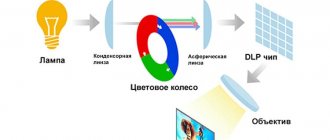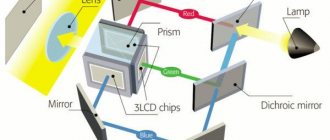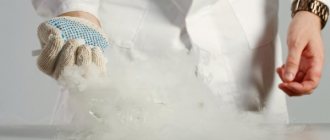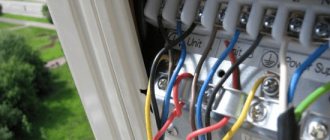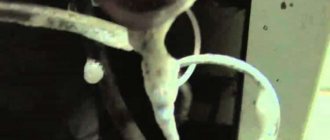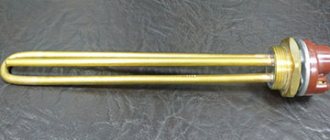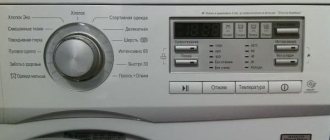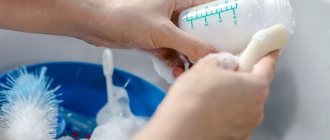Cleaning an air conditioner is a whole range of measures to clean the main components of climate control equipment. Regular maintenance is necessary for any device to ensure its proper and efficient operation. Some parts can be cleaned yourself, while others require a professional approach. "Plumber Portal" will tell you when cleaning the air conditioner can be done by yourself. When is the best time to contact a service center?
What are the main signs of severe pollution?
When the first symptoms appear, you may not notice the problem.
If the manufacturer's terms and conditions are violated, the following symptoms are observed:
- Arbitrary temperature changes.
- Low quality cooling.
- The appearance of strong unpleasant odors.
- Leaks in the indoor module.
Even just one symptom already indicates that the system requires cleaning at home. If there is no response, there is a high probability that many internal parts will fail before the specified time. Then there will be additional costs due to the need to contact the service.
The instructions provide basic information regarding equipment maintenance, repair and cleaning. Additionally, there is a diagram for disassembling/assembling the indoor unit. The same applies to the algorithm for self-flushing the internal system.
How to understand when it's time to clean your air conditioner
Here are the signs that clearly indicate that the split system is dirty:
- An unusual noise appeared, the air conditioner began to hum and crackle when operating.
- After turning it on, you notice an unpleasant, musty smell.
- The temperature in the room began to drop more slowly than before.
- Electricity consumption has increased.
There is an important point here. If you are not a specialist in servicing split systems, then it makes sense to carry out only superficial cleaning: tidy up the air conditioner air filters, remove dust from the radiator and fan, and wash the housing.
More thorough processing of the same radiator, fan, drainage system and other deeply located elements should be entrusted to specialists. Otherwise, there is a risk that the air conditioner will fail.
Indoor module maintenance
There are several steps to clean the inside of the fan assemblies:
- Washing filter meshes.
- Fan flushing.
- Cleaning the radiator with evaporator.
- Cleaning the air conditioner drainage system.
New climate control equipment that was purchased recently only needs cleaning every 2-3 weeks.
Cleaning activities include the following:
- The body is freed from dust.
- They get down to the dirtiest parts.
- Split system processing.
When dust accumulates, the air becomes dirty and operating noise increases. The compressor, radiator or evaporator is more likely to overheat. Therefore, it is important to be careful when working, including when processing the indoor unit of the air conditioner.
Preparation for the procedure
Before starting cleaning work on the indoor unit, you must perform the following steps:
- All work must be carried out wearing a protective mask (respirator) and gloves. Such measures are necessary to prevent harmful pathogens from entering the human lungs, as well as to protect the skin.
- You need to start work with the main step - disconnect the device from the network. Many people forget that such a simple action is designed to protect the master from accidental electric shock.
- Before disassembling the air conditioner, it is recommended to protect the work area with plastic film. During the cleaning process, a lot of dust and dirt will fall from the units, in which a huge number of microbes will accumulate. After completing the work, the film can be rolled up and thrown into the trash.
Cleaning fan air filters
The inner panel includes a housing within which a mesh filter is mounted. The cleaning procedure does not depend on the shape of this part; it can be performed in different ways. To get to the internal structure, the device must be disconnected from the network. Unscrewing a few screws makes it easy to remove the cover from the front.
There should also be no serious problems when removing the mesh from the air conditioner. At the same time, regular cleaning and rinsing of air conditioners is often not enough. It is recommended to pre-soak the device with a neutral household product or laundry soap.
A rotary fan is responsible for the distillation of cooled air; it is also washed, if possible. Dust, grease, and other types of dirt may accumulate on the blades. Fans can be removable or non-removable; the former is easiest. They need to be disconnected and simply placed in water with a sufficient amount of cleaning agent. For non-removable parts, brushes are used. But with high-quality cleaning, dirt and grease accumulations are excluded, although it will take time to clean your home air conditioner with your own hands.
If there is a foreign smell, we can say that fungi or mold or other types of bacteria have appeared inside. Therefore, it is impossible to do without treatment with disinfectants and antibacterial agents.
The user manual describes in detail how often such work is carried out. The standard interval is every 4 weeks.
Instructions for cleaning the outdoor unit
The main difficulty in servicing the external unit is its location. If it is installed on the wall of a high-rise building on the side of a window opening, then it is better to avoid cleaning it yourself, unless you live on the first floor. It is safer to work when the capacitor is placed in the following places:
- on an unglazed balcony or loggia;
- on the wall of a private house where you can attach a ladder;
- under the apartment window.
The disassembly and cleaning procedure itself is quite simple and is performed in the following sequence:
- Unscrew the screws holding the top cover and remove it. Remove the fan protective grille.
- Unscrew the impeller fastening nut (thread - left) and remove it from the shaft. Wrap the engine in plastic to prevent liquid from getting into it.
On the left is a top view of the heat exchanger, on the right is the engine wrapped in a package - Thoroughly spray the cleaner onto the heat exchanger (condenser) on both sides and wait 5-10 minutes.
- Using a hand sprayer, flush until no more dirty water flows from the radiator. Wash the impeller, remove the package from the motor and reassemble the unit in reverse order.
For reference. The electronics and compressor installed in the external unit are separated from the condenser by a partition, so you can safely apply the product and rinse it off with water.
Washing is carried out from 2 sides - external and internal.
It is also better to postpone turning on the cooler for a day so that the seals have time to dry. How to clean the outdoor unit of the air conditioner is shown in the video:
Cleaning the heat exchanger with radiator
Such parts either complement the block within the system or are placed in a single module. Complete cleaning of the air conditioning system is carried out only by professionals. But this is an expensive procedure, so it is not recommended to forget about self-service. How to clean an air conditioner can be easily learned from official documents.
This cleaning sequence applies to a radiator with air conditioning:
- First remove the front cover.
- Disconnect the filter compartments.
- A vacuum cleaner or a brush with long bristles is used for dry cleaning. The main thing is to move from top to bottom so that the evaporator plates do not deteriorate during operation.
- A regular steam cleaner helps get rid of dirt films.
- The device is switched to recirculation mode, maintaining the lowest temperature.
- The antiseptic is sprayed with a spray bottle where air masses are sucked in. You need to make sure that the composition does not get on the radiator itself.
It is better to dry clean every month. Then there will be less accumulation of dirt, and the process itself takes a minimum of time. It is good if the event is carried out simultaneously with washing the filter meshes. Anyone who is interested in how to clean an air conditioner should remember this.
Instructions for cleaning the indoor unit
Before starting work, you should complete all recommended preparatory actions: protect your respiratory system and skin, cover the work area with film.
General cleaning
So, how to clean your air conditioner yourself? First of all, before cleaning the air conditioner at home, you need to determine the degree of contamination of the device. In some cases, it is enough to rinse only the filters. If the unit is constantly operating in the summer, it is recommended to carry out this simple procedure weekly, then the period for complete equipment maintenance can be postponed to a later date.
Regular filter maintenance can be carried out using a regular vacuum cleaner - in this case, the cells and pores of the coarse cleaning system will always remain clean.
If the filters are thoroughly covered with dirt and dust, they will have to be washed. To do this, the filter is treated with special means and then washed with water.
Fan and filter
You can find the mesh filter directly under the cover of the indoor unit; it looks like a holder with curved mesh plates inside.
Small dirt can be easily removed with a vacuum cleaner, but for complete cleaning it is recommended to rinse the filter. Wash it in warm water, after soaking it in an antibacterial solution.
The filter can be put back in place only after it has completely dried, and it cannot be dried under the pressure of a stream of hot air - only natural drying is used.
Dismantling the fan is most often impossible, so you will have to wash it on site.
To do this, they usually use an old toothbrush and a water solution of laundry soap. The solution is applied to the blades and waited for 10-20 minutes, after which the softened dirt is removed with a damp cloth and brush.
Like the filter, the fan must be dried in natural humidity conditions.
Radiator and heat exchanger
These mechanisms are most often located in the indoor unit. To completely clean them, it is necessary to dismantle them, but it is better to entrust such work to specialists. At home, cleaning is carried out in stages, in accordance with the following algorithm:
- the cover is removed;
- the filter is removed;
- Using a vacuum cleaner, preliminary cleaning of the internal surface from dust is carried out. It is better to use a brush with bristles as an attachment;
- dense layers of dirt are removed with a steam cleaner;
- Next, you should switch the air conditioner settings to the lower temperature mode;
- At the point where outside air enters, a special cleaner is distributed using a sprayer, and care must be taken that splashes do not fall on the radiator.
It is recommended to clean the heat exchanger and radiator monthly.
Drainage
The drainage system of the equipment consists of a tray for collecting evaporation and a drainage tube that removes excess moisture from the pan. Along with the water, dust and small debris get into the pan and tube. Prolonged operation of the air conditioner without cleaning these elements leads to the appearance of colonies of fungus, mold and the formation of pockets of foul-smelling slurry, resulting in the formation of unscented smudges under the equipment.
To free the equipment from accumulated problems, it is necessary to dismantle the pan and rinse it thoroughly with special products in warm water. To clean the tube from large debris, use air pressure from a vacuum cleaner, then rinse the inside of the tube with running water and soap concentrate or an antibacterial agent. To remove fungus and mold, special antiseptic agents will be required.
Cleaning and disinfecting the drainage system
The drainage system in an air conditioner is a system consisting of two elements - a pan that collects water; tube that removes liquid. Dust combined with moisture leads to the development of fungi and other harmful microorganisms. This causes unpleasant odors and other consequences.
The tray is first disconnected from the board and the output tube. After this, the part can be easily rinsed under running warm water. A compressor or vacuum cleaner is used to clean the drainage pipes. For the channel, use ordinary soapy water with a soap solution or a neutral cleaning agent. They are suitable for anyone who is interested in how to clean a split system.
Mold or mildew must be removed from the system if such negative effects occur. Then the surface is treated with antiseptic agents of any variety. It will not be superfluous to periodically treat the pallet, because mold often accumulates inside this part.
Cleaning the drainage system
If the air conditioner is not equipped with an automatic cleaning system, it must be cleaned manually. To remove dirt, treatment is carried out in one of two ways
- ferry;
- special aerosol.
This is what the masters do. The work is delicate, complex, and requires experience, knowledge and a steady hand. You can clean the drainage system yourself. But this can only be done if the condensate drain hole, the drainage tube or the bath itself is clogged.
How is the work going? Wash the pan, clean the condensate drain hole, and blow out the drainage tube with a vacuum cleaner. If the tube is very dirty, buy a liquid for cleaning split systems and pour it into the tube with a syringe. Wait 20-30 minutes. Repeat blowing with a vacuum cleaner.
If you notice mold stains, be sure to disinfect the system with chlorhexidine. This product is sold at the pharmacy. You can call a specialist: he will disinfect and issue a guarantee. The company employee will also tell you why the mold appeared. Disinfection is the last stage of drainage cleaning. Once you're done with it, move on to the outdoor unit.
External module maintenance
The external module does not require such frequent maintenance. It is enough to clean the structure once or twice a year.
This is the place where the following pollution accumulates:
- Dirt.
- Dust.
- Leaves.
- Branches.
- Poplar fluff.
If not cleaned, the compressor and fan will start to heat up too much. This causes parts to break faster than usual.
The problem comes with accessing the module. The block itself is mounted on the outside of the balcony, or next to the window. But high-quality washing without additional equipment is not always possible. This is important for any user interested in how to clean a split system.
It is better to trust the work to specialists if you are not sure of complete safety for life.
With free and safe access, cleaning should not be a hassle:
- Disconnecting the main device from the network.
- Removing all debris, large and small.
- Removing the protective casing and cleaning the block.
- Washing the fan blades with a damp sponge.
- Flushing the radiator using a steam cleaner or water pressure. The main thing is that water does not end up in the electrical module.
There are a large number of detergents available on the market that are suitable for cleaning air conditioners. An excellent alternative would be regular laundry soap. Thanks to this, even stubborn grease from the air conditioner at home will not be harmful.
Cleaning the external unit of the split system
Since this part is located outside and at a height, its maintenance is somewhat more difficult. It is recommended to clean it twice a year.
Important! The procedure can only be performed after disconnecting from the power supply.
First, remove the cover. All rubbish that can be collected by hand is removed. A powerful vacuum cleaner carefully, without touching the electrical circuit of the unit, processes all accessible places. The remaining dirt is removed with a brush and a wet rag, and the block is assembled.
Why is it important to turn to professionals in your field?
There are now many companies offering cleaning services for household and HVAC equipment.
Here is just some of the work that is offered to clients:
- Cleaning.
- Scheduled technical inspection, which covers all air conditioners.
- Diagnostics.
- Repair.
The devices may differ greatly from each other in practice. Many people order services from professionals to get a clear example of further actions.
Simple cleaning is easy to do on your own, but this is not enough for full maintenance. While the air conditioner is running, the amount of available refrigerant decreases by 7% or more each year. The volume of this substance must be replenished, which is impossible without the help of specialists. The fan will also need to be cleaned.
If the work is no longer stable for no apparent reason, they also call specialists working in a particular service. If there is mechanical damage, simple cleaning will not be enough; repairs and full replacement of parts will be required.
Signs of a dirty air conditioner
Any equipment in the house needs proper operation, timely cleaning and maintenance. Climate control technology is no exception. If an air conditioner is installed in the room, you should pay attention to:
- a crackling sound of unknown origin;
- noise that may occur periodically or be present constantly;
- damp smell;
- uneven cooling or heating;
- increase in electricity consumption;
- gurgling sounds from the system;
- water appears under the device.
Do not delay checking the device. If you detect at least one sign, you should clean the air conditioner at home yourself or use the help of a service specialist.
Preventive measures are indicated for climate control equipment at least 2 times a year before the onset of cold weather and before the onset of persistent warming.
Factors directly or indirectly affecting pollution:
- indoor air quality;
- frequency of use of the device;
- device location.
If signs of asthma, acute respiratory infections, headaches with increased fatigue appear or become more frequent, then the first priority is to clean the air conditioner in the apartment.
Do not forget that contamination may pose a threat to your well-being and damage.
Preparing the system for summer or winter
Some activities related to preparation for the season are required. It does not matter whether a particular system is adapted for winter use or not. Temperature restrictions apply to almost every manufacturer. If the indicator is below the permissible level, fluid leaks appear and the block subsequently freezes. Self-cleaning is necessary.
Cleaning the entire system and drying air conditioners is mandatory before cold weather. There is a special function for this called FAN. But there are also other designations.
In preparation for the warm season, the system is cleaned again. Air filters, fan and evaporator are washed most thoroughly. The system in the block is checked specifically.
Air conditioning with self-cleaning system
This is not to say that an air conditioner with a self-cleaning function does not need to be cleaned yourself. Yes, you will have to do this less often, but it is still necessary. Otherwise, the air in such a system passes through the filtration system and dries all its parts.
The ionic cleaning system has proven itself well. And the latest models have smart sensors that can analyze air quality and, if necessary, trigger purification.
Users often ask the question: how to clean a home air conditioner?
And we can name three groups of funds:
- For a heat exchanger in a block hanging outside.
- For a heat exchanger in a home unit.
- For parts and processing of capacitor.
Any special product is aimed at disinfecting places where fungus, mold and bacteria like to settle. In addition, cleaners fight corrosion and salt deposits. You need to work with them with gloves!
Why you need to clean air conditioners
The problem is not only aesthetic in nature, there are also other unpleasant consequences. Air circulation slows down in the presence of several layers of dust, even not very thick ones. The heat exchanger heats up quickly under such conditions, and then the compressor fails. The appearance of unpleasant odors and bacteria is also attributed to the consequences of an unclean air conditioner. Because of this, split systems become dirty.
Why do you need to clean?
The operating principle of the air conditioner is based on intensive heat exchange between air and freon circulating in the circuit.
To implement this, the fan forcibly creates an air flow through the evaporator radiators in the indoor unit of the split system and the condenser in the outdoor unit.
The flow captures suspended mechanical particles (dust), organic matter (dust mites, fungal spores, plant pollen), and small debris.
All this settles on the design elements of the air conditioner:
- filters;
- fan impellers;
- fins of the evaporator and condenser radiators.
Over time, the sediment layer increases and begins to affect the operation of the units:
- Pollution worsens the heat exchange between radiators and air flow, reduces the capacity of air channels and filter cells. This leads to a decrease in system performance (an increase in the time it takes to reach the specified temperature parameters), an increase in the intensity of freon circulation in the circuit and, accordingly, an increase in the load on the units and electricity consumption.
- The balance and alignment of moving components is disrupted, the quality of lubricants deteriorates, thereby accelerating wear of parts and reducing the service life of the air conditioner.
- Layers of pollution, especially in the presence of moisture, become an ideal breeding ground for microorganisms dangerous to human health (mold, dust mites, bacteria such as legionella). Their removal by air flow into residential premises provokes allergic reactions and diseases, respiratory tract diseases.
The only real way to prevent such troubles is to regularly clean your air conditioner.
Disinfection Tips
Only professional cleaning products completely remove dirt from both external and internal parts of air conditioners. But this does not mean that the microflora is completely destroyed. That’s why disinfection is so important for any split system.
Chlorhexidine is one of the optimal means to resolve the issue. The drug is sold in any pharmacy and has disinfecting properties. It is used to process all internal components and parts inside the air conditioner. The same goes for the drainage system.
To distribute over the surface, use a spray bottle or a regular rag. The main thing is that the product does not get into an electronic circuit or where there are a lot of wires. All you have to do is wait until the device dries. Then the split systems are checked.
How to clean your air conditioner yourself
Most modern air conditioners consist of two units, each of which requires periodic cleaning. The greatest difficulty in this matter is caused by the internal unit of the split system, since high-quality cleaning of the parts will require its complete disassembly. It’s easier with an external unit - only the radiator is washed in it; in most cases, you can only get by by removing the grille in front of the fan.
Before you start cleaning, you need to disconnect the air conditioner from the power supply (pull out the plug from the socket or turn off the machine to the air conditioner).
What is checked during a system inspection
Experts recommend regular maintenance and inspection of modern split systems.
Here are the main points worthy of attention:
- Appearance of oil inside the compressor unit.
- The tightness of the freon circuit.
We need to see if the freon itself is leaking. And are there any irregularities along the contour through which moisture can penetrate inside?
Separately study the wires through which power is supplied. They look to see how intact they are. The quality of contact drawing is also important. You should not refuse to study the elements used for fastening. All work is carried out only when the air conditioner is disconnected from the network. Otherwise, the split system will not work correctly.
Why servicing more often is beneficial
Unlike old climate control equipment, modern split systems are capable of not only cooling, but also heating the air. Therefore, owners of apartments and private houses often use them for heating in winter, until the street temperature drops below -5 ° C. Accordingly, the main elements of the air conditioner - filters, heat exchangers and fans - become dirty twice as fast. There are other compelling arguments in favor of timely maintenance:
- To your health. It is exposed to the harmful effects of fungi and mold that settle and actively multiply inside an overly dusty unit. The sign is an unpleasant musty smell.
- Dirt accumulated in the external and internal radiator prevents the normal passage of air flow, which reduces the efficiency of the entire installation. With a constant output of heat or cold, more electricity is consumed.
- Seasonal washing is one thing, but cleaning and antibacterial treatment of a heavily contaminated indoor module is another thing entirely. You will do the first yourself, but for the second you will have to call a specialist with specialized equipment (high pressure washer, steam generator), which will cost you a pretty penny.
Note. A decrease in the efficiency of any refrigeration machine leads to an increase in the load on the compressor - the most expensive part. It turns out that heat exchangers clogged with dirt bring the time of repair, or even replacement, closer.
There is no point in developing the topic of harmful microorganisms living inside dirty air conditioners and harming people’s health, since this fact has long been known to everyone. But it would be useful to find out how much professional cleaning of split systems with disinfection costs in your region. After all, if the evaporator has not been washed for several years, then calling a specialist becomes inevitable.
Comparative example. The cost of comprehensive cleaning of household air conditioning systems with a power of up to 5 kW is in the range of 2-3 thousand rubles. (35-53 USD). These are Moscow prices; in the regions they may be lower. If you wash the split with your own hands, then you can easily do it in 5, maximum – 10 cu. e., which you will spend to buy the cleaner. Agree, independent prevention is much more profitable than after-sales service.
In the photo - applying Bizol cleaning foam (price - about 6 USD)
Overview of suitable cleaning products
Special foam is used for prevention inside heat exchangers. Shake the can several times before using it. After this, the ribbed part of the device is processed.
After some time, the contamination will go into the drainage, and the foam will become liquid. The air conditioner is turned on so that the cleaned parts are completely dry. When undergoing prevention, it is useful to turn on the device and then use the ventilation mode.
The basic principle of action is determined by the active substances included in the composition.
Most products now include the following components:
- Biologically active, for pest control.
- Chlorine-alcohol, acid and alkaline additives.
- Fragrances and other similar elements.
- Surfactants that help with procedures such as cleaning the indoor unit.
Favor Cool
For disinfection and cleaning of any ventilation systems. Removes not only dust, but also mold, mildew, and various bacteria. With regular use of the product, the unpleasant odor disappears completely. The composition is suitable for air ducts in cars and at various industrial facilities. The volume of the container is initially 0.5 liters. Reviews are mostly positive.
TOP House
From German masters, produced in Germany. It is used in the prevention of internal and external blocks equally. Cleans fans along with guide structures inside systems.
There is no negative effect on the surface layer in the tubes. The standard volume is 0.75 liters.
Has the following advantages:
- Creating an antibacterial effect.
- Refreshes any surface.
- Antiseptic effect.
- Protection against dust deposits.
- Application of formulas from leading manufacturers in Europe. This cleaning your home air conditioner especially effective.
Techpoint
It is considered one of the most powerful means to clean the air conditioner. The main function is surface disinfection for up to 8 months. Completely removes unpleasant odor and bacteria that cause it.
The composition includes the following set of active substances:
- Dye.
- Complexing agents.
- Isopropanol
- Solvents.
- HOUR.
- Surfactant
- Glycols.
- Water. It can be used when cleaning the air conditioner in the office.
The product is sprayed on the coil, going from top to bottom. It is recommended to wait at least five minutes after application for the treatment to be most effective. Supplied in special 1 liter containers. The kits are supplemented with hand sprayers.
Indesit c00093751
Many users have already appreciated this product, which is why it is in great demand. Suitable for air conditioning systems both in the home and inside cars. Removes dust and fungi, any unpleasant odors inside the system. Sales form: cans up to 150 ml.
Magic Power MP-028
The product also performs several functions:
- Deodorization.
- Disinfection.
- Cleansing.
After prevention, a well-thought-out composition copes with any contamination and negative consequences. Cleaning your home air conditioner will take a minimum of time.
Cleaning the air conditioner
Many consumers have access to modern appliances such as steam cleaners. These devices are very convenient for cleaning your air conditioner at home. Steam not only cleans surfaces, but also disinfects parts when antiseptic agents are added.
The air conditioner consists of:
- filters;
- radiator;
- fan;
- drainage systems;
- external and internal blocks.
Some climate systems have a self-cleaning function. In this case, it is enough to run the program.
If the program is missing, the following recommendations are used:
- Do not neglect protective equipment such as a respiratory mask and gloves. They will help avoid unnecessary allergic reactions from the skin and mucous membranes.
- It is necessary to turn off the device from the electrical network.
- Prepare fabric and bags to protect the floor and walls.
- Open the front panel with the protective grille.
- Remove the primary filters. If you had to clean the air conditioner in your apartment yourself, the filters are washed separately with clean running water.
- The fastening parts are covered with protective plates. They will need to be carefully removed.
- Remove the air conditioner housing.
- Set aside the indicator panel with wires and power supply separately. Wrap in a bag to prevent water from entering.
- Remove the additional secondary (fine) filter. If they cannot be washed (certain models), replace them with new ones.
- To clean the air conditioner in your apartment yourself, you should cover it with a special bag to protect it from splashes and stains on the walls of the room.
- A small plastic hose is placed over the drainage outlet (“spout” for draining water) and lowered into a bucket.
- Remove excess dust from the indoor unit with a vacuum cleaner.
- Using a previously prepared cleaning solution, using a spray bottle, treat the fan and radiator of the air conditioner, not forgetting about other parts. To clean the radiator, it is convenient to use special comb brushes. Wait a while and repeat this step again. Cleaning products can be purchased in specialized stores.
- Rinse off the products with a spray bottle of clean water.
- All parts must dry on their own.
- Assemble the device, placing all the parts in the required and correct order (as it was).
Finally, you can connect the device to the electrical network.
Split system indoor unit
If you have decided to clean the air conditioner at home yourself, you should pay great attention to the indoor unit.
The indoor unit consists of the following elements:
- Front Panel. It is a plastic lattice panel that allows converted air from the air conditioner to pass into the room and covers the internal parts and mechanisms. The panel is secured to the body with a system of latches;
- The coarse filter looks like a fine-mesh mesh, which is designed to prevent small particles of dirt, dust and other debris from entering the equipment. This part must be checked regularly and, if necessary, cleaned or replaced;
- The fine filter is mounted in the system in the form of several sequentially installed elements. They are:
- coal (to neutralize odors);
- zeolite (to control the content of chemicals in the air);
- electrostatic (barrier against fine dust);
- plasma (also fights fine dust and dirt particles);
- ultraviolet (to prevent the formation of mold and fungi inside the equipment);
- photocatalytic (to combat toxic substances);
- antibacterial (to prevent the formation of colonies of pathogenic bacteria);
- antioxidant (to transform free radicals).
- the fan is designed to generate air flow through equipment components and assemblies. Can operate in various speed modes;
- an evaporator in which freon passes from a liquid to a gaseous state, due to which the air flow is cooled;
- horizontal blinds are designed to regulate the direction of the flow of recycled air vertically. Controlled manually or using a remote control unit;
- the indicator panel reflects the state of the equipment and is designed to establish the required control modes;
- vertical blinds are designed to regulate the horizontal direction of the recycled air flow. Controlled manually or using a remote control unit;
- The condensate tray is located under the evaporator. Designed to collect moisture and further transport it through the drainage hose to the outside;
- The control electronic board is traditionally mounted on the right side of the unit and is intended for general equipment control. Next to the board there is a terminal group through which the device is connected to the power source;
- fitting connections are designed to assemble into a single whole the system of tubes located in the internal and external blocks, ensuring the passage of freon through the entire unit.
How to open a block
To open the lid, you should slightly pry it from below and direct the movement upward. The cover will move away enough to remove the strainers. After removing the filters, the cover can be removed completely by first unscrewing the screws under the blinds.
Required Tools
- Small brush. A dental one will do.
- Vacuum cleaner. It is more convenient to work with a small hand-held vacuum cleaner.
- Soft cloth.
- A container of water to wet the rag.
- Soap or other product that does not contain chemically active reagents. There are special compositions for caring for prefabricated elements. They contain antiseptics that prevent the appearance of bacteria. In addition, they protect metal parts from corrosion.
- Gloves and respirator. There will be little dust and dirt, but contact with them is harmful and unpleasant.
Processing filter elements
Each split system is equipped with filter meshes, usually made of polymer materials. They should be removed and wiped with a damp cloth. When removing the plates, they are lifted and pulled down towards the room.
Fat deposits can be washed off with a warm stream. If it does not come off, the mesh is kept in warm water for half an hour. A soap solution will help remove grease. Dilute regular soap in a container, adding liquid soap. After soaking, when the fat has completely disappeared, the mesh is washed under a clean stream, gently wiped with a soft dry cloth and dried at room temperature. A hairdryer and radiator cannot be used - the plastic can melt even at 70 degrees. The interior should be vacuumed before installation. To avoid mistakes during the installation process, before cleaning your home air conditioner with your own hands, you need to study the instructions.
Carbon, antibacterial and antistatic traps are replaced with new ones when they fail or when their service life expires.
Cleaning the radiator with refrigerant (evaporator)
The evaporator consists of several metal plates assembled together through which freon moves. The part is located under the bottom cover on the body of the indoor unit. It should be removed from the housing and inserted back after processing.
When cooling, condensation is released from the air and settles on the surface of the radiator. Dirt particles get clogged between the plates that make it up. If the dust is not mixed with condensation, it can be easily collected with a brush or vacuum cleaner. Wet and dried dirt is removed with a wet cloth.
Old layers that have been absorbed into the surface cannot be removed on your own. You will need professional equipment that acts on plaque with hot steam.
Processing rotary fan blades
Unlike the usual one, it consists of plates located around the shaft parallel to it. The device resembles a rotating head-cutting unit mounted on the front of a combine harvester. Plaque accumulated on the blades can damage the device. They will cling to other structural parts, gradually deforming and disrupting the smooth operation of the engine. The drive connecting the shaft to the motor may be damaged. If the system jams, the motor will burn out.
Before starting work, it is better to cover the walls and objects nearby with plastic wrap. Rotating plates can splash them.
First, prepare a washing solution from bar and liquid soap diluted with warm water. It is carefully applied to the entire surface to be treated by rotating the drum. You cannot put too much pressure on it, otherwise it will bend, and then you will have to replace the entire fan. It is better to spray the liquid with a brush. The dirt will get wet in half an hour. After running a sponge over the surface and making sure that the coating has softened, you should start the engine at low speeds. To prevent splashes from scattering throughout the room, you can hold a wide sheet of plywood or hardboard in front of the drum. Film, paper or fabric should not be used for these purposes - they can get under the plates. The remainder of the plaque is removed manually with the drum turned off.
Special comb brushes
Many people advise giving preference to this tool when cleaning work is carried out by the owner himself. Especially for a radiator-condenser.
The teeth are made only from modern polymers. The handle fits comfortably in the hand, despite the fact that it is plastic. The teeth penetrate inside the radiator packing, coping with any task. The main thing is not to use deformed devices, otherwise both the instrument and the air conditioner will suffer. The heat transfer of the radiator is reduced threefold if a third of the lamellas are jammed.
A fluffy cloth and spray also become indispensable cleaning aids. It is enough to use a soap solution, but specialized products are always more effective.
Often, the degree of contamination of air conditioner housings depends on where the device is located. If the device is located near the floor, right under the ceiling, more dirt gets on it. It’s good if other household appliances are located at a sufficient distance. Then cleaning the air conditioner yourself will not be a hassle.
How to disassemble the air conditioner in an apartment yourself and clean it?
At first glance, this process may seem quite complicated to those who have never done it. But with regular implementation of the procedures, everyone can cope with this task:
- First you need to turn off the power to the device.
- Open the housing with the ventilation grille. The case is not equipped with any fastenings, therefore, coping with this task will not be difficult.
- Next, carefully remove the primary cleaning filter. Fastener parts come into view. Depending on the model of the split system, fasteners can be latches or screws. You should stock up on a screwdriver in advance.
- After removing the fasteners and sliding the indicator panel, you can see the secondary (fine) filter and the electrical unit. Since the indicator panel is non-removable, it should be wrapped in a bag together with the electrical unit to prevent short circuits if water gets on it.
- Fix a large bag on the sides and back wall of the air conditioner to prevent dirt and water from getting on the walls. It is also recommended to cover the floor under the device. At specialized service centers you can purchase a ready-made kit to clean the air conditioner in your apartment yourself.
- The kit consists of a bag, a funnel and holders for fixing the stiffeners. A hose for cleaning the drainage system will have to be purchased separately.
- When opening the indoor unit, you must immediately collect dust with a vacuum cleaner.
- Apply soap solution to all parts of the indoor unit. Leave for a while. Then rinse with clean water. Always start from the back of the block.
How to properly wash the parts of the indoor unit will be discussed below.
After completely drying all parts of the unit, remove the bag and reassemble the air conditioner (in reverse order).
Filters
It is also possible to clean the air conditioner filters in your apartment yourself.
The filters in the device are very important. They perform a rather important function of filtering air from incoming dust. There are mesh filters that can be cleaned. And there are those that can only be changed. Those. thin filters of the indoor unit in certain models of air conditioners.
The filter can, of course, be changed every time you clean the air conditioner at home, but it is possible to clean it too.
To replace or clean the primary filter:
- Disconnect the device from the network.
- Remove the protective panel and remove the filter. If it is damaged, replacement is necessary.
- Replace the filter or clean it with a vacuum cleaner or a regular brush.
- Disinfect the filter with a special agent. In case of heavy contamination, soak in a special solution for 2 hours, then rinse with warm water.
- The filter should dry on its own. Mechanical drying (battery, hair dryer) is prohibited.
- Install it in place, having first cleaned all other parts.
To replace or treat the fine filter of the indoor unit when cleaning the air conditioner in an apartment:
- Disconnect the device from the network.
- Remove the protective panel, the cover of the indoor unit and remove the filter. If it is damaged, replacement is necessary.
- Replace the filter or soak it in soapy water for 1 hour. Then rinse. If there is a thick layer of dust on the filter, it is better to first clean it with a dry brush.
- The filter should dry on its own. Mechanical drying (battery, hair dryer) is prohibited.
Finally, install it in place and close the block cover.
Radiator
If you decide to clean the air conditioner at home yourself, an online video can help. In this case, special attention should be paid to the radiator. An important element in the system is a set of thin plates located at close distances from each other.
The gaps between these plates are minimal. It is very difficult to clean them. If the distances between the plates are covered with dust, this will impair the performance of the entire system.
You can clean the plates with a stiff bristle brush or vacuum up the dust. Gently wash the plates with a cleaning agent or plain water.
When cleaning the radiator, it is important not to damage its fins. After cleaning is complete, reinstall the radiator.
If you do not clean the air conditioner at home on time, the radiator will overheat. This will unnecessarily load the compressor, and accordingly, its service life will be reduced.
Fan
A fan can be seen immediately below the radiator. It is basically a permanent cylinder with blades. The distance between the blades is quite small. It must be cleaned with a soap solution applied with a spray bottle. We also use it to clean the fan from the solution with clean water. If the fan can be removed when cleaning the air conditioner at home, it will be easier to wash the blades.
To clean the removable fan:
- Disconnect the device from the network.
- Remove the protective panel of the case and remove the fan (on removable models).
- Clean with a special soap. Then rinse with warm water. All manipulations must be carried out slowly, as carelessness can lead to damage to the blades. In this case, the fan will have to be replaced.
- The fan should dry on its own. Mechanical drying (battery, hair dryer) is prohibited.
- Treat with an antiseptic to prevent the accumulation of bacteria.
Finally, install it in place, after cleaning all other parts.
Drainage system in the process of cleaning the air conditioner at home
If you constantly see water on the floor under the air conditioner, you can judge that there is a problem with the drainage system. This occurs because the condenser flow cannot pass through the clogged tube and flows directly from the unit onto the floor.
Most often, the tube becomes clogged with dust and dirt, as well as grease. Also, the tube may freeze if you use the air conditioner as an air cooler in cold weather. In the summer, insects can get into the tube. This will also cause the drain to become clogged.
Before cleaning the tube, it is worth washing the drain pan and other parts if you decide to clean the air conditioner at home.
To clean the drainage system:
- Disconnect the device from the network.
- Remove the housing protection panel and filters.
- Remove the drain pan. After removing it, a hole will open - a drainage channel.
- Wash the tray with soapy water, rinse with clean water and dry.
- Disconnect the tube and blow out the hose with a blow-out vacuum cleaner. If there is a rigid connection, you can carefully punch through the channel. The cable (wire) must pass through the entire hose of the system and push out all debris from the pipe facing the street.
- Rinse the tube with warm water and an antiseptic to avoid the accumulation of bacteria. You can use an apothecary bulb; it will create pressure in the hose.
- Reinstall the tube after cleaning all other parts.
If the air conditioner has a self-cleaning function, then there is no need to manually clean the drain.
External unit
If you want to clean the air conditioner in your apartment yourself, do not forget about the external unit. It is located outside the wall, on the street. Cleaning seems to be a difficult task.
The block consists of:
- fan;
- capacitor;
- compressor;
- filter;
- various small parts such as board, valve, connections inside.
To clean the drainage system:
- Disconnect the device from the network.
- Remove the top cover.
- Sweep away debris with a long-handled brush. You can use a vacuum cleaner.
- Simply wipe the condenser and fan with a damp cloth.
- Reinstall the block housing.
- Start a few hours after it has completely dried.
Handle the special boards inside the unit very carefully; they must not be damaged. It is worth considering that cleaning the external unit at height without special training and safety equipment is strictly prohibited.
How to check the tightness of the freon housing
Loss of tightness of the freon circuit is one of the malfunctions that is most often encountered in practice. Timely prevention and inspection protect against additional costs.
How difficult the situation is depends on the following factors:
- Operating mode of the device.
- Time from the moment a leak appears until it is detected.
- Location of damage.
- The amount of refrigerant released. This makes cleaning split systems difficult.
When refrigerant leaks occur, the compressor is the first to heat up and deteriorate.
The problem can be easily recognized by the following signs:
- Frost appeared on the tube of the external unit during prolonged operation.
- The condition of the oil has deteriorated.
- Damaged insulation on the pipeline.
- Cold or warm air did not begin to come out five minutes after switching on.
- Overheating protection triggered.
- Dark thermal insulation.
Serious leaks and breakdowns will not occur if the equipment is serviced in a timely manner and the malfunction is detected. A decrease in the density of roller joints is the reason that most often leads to breakdowns.
There are a number of other characteristic signs that make the problem easier to detect:
- Increased acidity of the oil, it acquires a greenish tint. But this is a symptom of a problem that has been greatly neglected.
- Thermal protection is activated if the climate system is switched to heating mode and it is cold outside. This happens if there is water inside, blockage and hardening occur. The compressor suddenly overheats and the overall pressure drops.
Inspecting equipment before cleaning
We will consider the procedure for cleaning climate control devices, step-by-step instructions for their implementation and useful tips using the example of the most popular type of home and office wall-mounted split systems.
Before you start cleaning the split system yourself, you need to carefully inspect it externally, focusing on the following points:
- no damage to the current-carrying wires of the electrical circuit, their insulation and grounding;
- reliability of fastening of all screws in threaded connections;
- integrity of the freon circuit;
- no mechanical damage.
Such inspections of climate control equipment do not take much time, and it is recommended to carry them out not only before servicing the air conditioner, but also on a regular basis, at least twice a month.
Working on the principle of a vacuum cleaner, the split system traps not only dust, but also various bacteria, microorganisms, and allergens. When inspecting an air conditioner, you can see with the naked eye the deposits where these invisible enemies of health reside, which are then concentratedly released into the air
In addition to periodic cleaning and maintenance of the split system, if certain symptoms arise based on the inspection results, there may be a need for unscheduled maintenance of the unit.
Signs of excessive contamination of the split system include:
- a characteristic unpleasant odor immediately after turning on the device;
- leaks from the housing of the indoor module;
- the appearance of an unusual sound during operation, extraneous crackling or increased noise;
- change in air temperature.
During routine maintenance of the system or to treat the indicated symptoms, it is necessary to perform all cleaning procedures in a certain step-by-step sequence, the result of which will be a device cleaned of all contaminants and operating stably.
Based on the number of main units of the split system, the cleaning procedure can also be divided into two stages: caring for the indoor unit and cleaning the outdoor module.
Recommendations for quick oil analysis
First, a small amount of oil is removed from the device. Then they look at the external signs and compare it with another composition that is definitely pure. Next, check for the presence of acid. To obtain results, the following requirements are met:
- The air conditioner is turned off. Wait up to ten minutes for the oil to drain over the internal surfaces.
- A one-quarter ball valve is connected to the service outlet.
- A rubber tube is put on the tap, the other end is lowered into a special container.
- A small amount of oil is drained and allowed to settle.
- The collected composition is poured into clean water, which the systems are also cleaned with.
Smell and shade are the main criteria for comparison with oil, which is known for sure to be pure.
The compressor has definitely overheated if the liquid is dark in color and has an unpleasant odor. Replacement is required because the composition is no longer in working order. If the issue is not resolved in time, the device will break down. A greenish tint will indicate that there are “copper salts”. This is usually due to liquid inside the device. An acid test is required for an accurate diagnosis.
The liquid is returned back if the results are positive. The main thing is to tightly close all parts of the structure that open. The air conditioner starts up for the first time and enters cooling mode.

